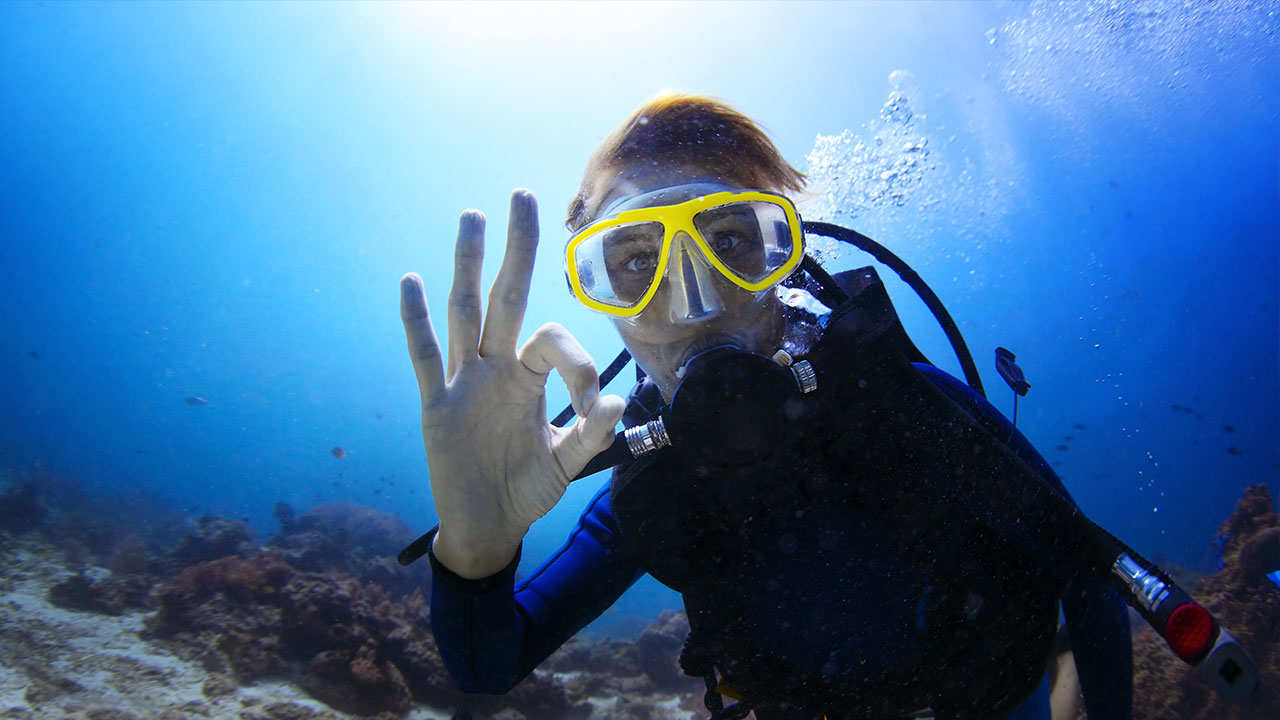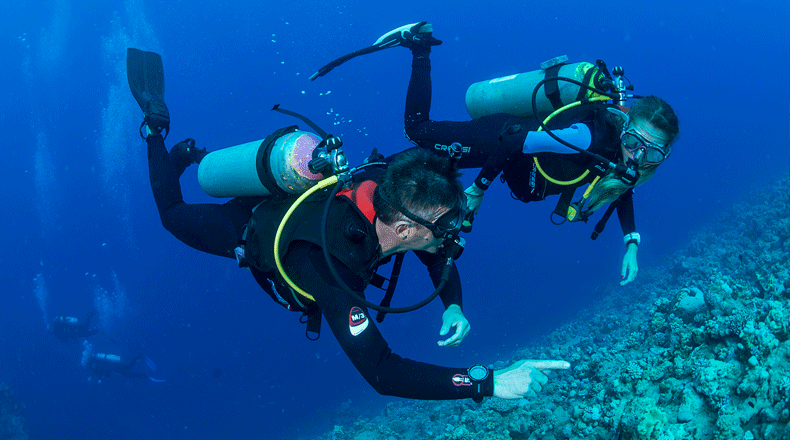How to Prevent Vertigo When Scuba Diving

Vertigo when scuba diving is a fairly common, yet infrequently discussed, experience. While it isn’t dangerous in itself, vertigo can lead to more worrying issues beneath the surface. For this reason, it is important to be prepared - know the causes and symptoms of vertigo, as well as ways to prevent it and deal with it.
What Is Vertigo?
Vertigo is the feeling that the world around you is moving, spinning or tilting while you are remaining essentially still. Divers may also not be able to tell which way is up, experience dizziness, nausea, and vomiting. Not only are these symptoms uncomfortable, but feeling that you’re not in control while diving can lead to anxiety or even panic underwater, which, in turn, can cause a number of other serious issues.
Why Does It Happen?
There are various causes of vertigo. In diving, it is most often due to an imbalance in pressures within the left and right ears on either descent or ascent. It can also happen when cold water enters one ear but not the other (for instance when you are diving with a hood and one side of the hood seals over the ear tighter than the other). This type of vertigo disappears as the condition equalizes and leaves no lasting effects except that the associated symptoms may contribute to diving accidents.
Disorientation is another common cause of vertigo among divers. It happens when the information your brain is receiving is dissonant to your view in the water. For example, when diving in either extremely good or extremely poor visibility, the brain can struggle to process the information presented.
Outside of pressure variations between the two ears or mental triggers due to disorientation, vertigo can be a result of various inner-ear conditions, such as benign paroxysmal positional vertigo (BPPV), Meniere’s disease or vestibular neuritis.
Last but not least, vertigo can also be a symptom of DCS, hypoxia, or contaminated air fill.
How to Prevent Vertigo While Diving?
There are several things you can do to prevent vertigo:
- Don’t dive when you are unwell. If you are suffering from a cold, congestion, or are otherwise ill, it is best to cancel or reschedule your dive, as even a minor ailment may disrupt effective equalization, leading to vertigo.
- Consult your doctor if you have any underlying conditions. Be honest on your diving medical form. If you’re answering ‘yes’ to taking prescription medications (or have any other ‘yes’ answers), obtain your doctor’s clearance before diving. Undesirable and unknown side effects may reveal themselves as vertigo-like symptoms while you’re under pressure during a scuba dive.
- Check the gas in your tank before the dive. During your buddy check take a few breaths from your tank. If the air has a ‘taste’ - particularly if it feels heavy or oily - you may have a contaminated air fill. Let the dive operator know immediately.
- Equalize air spaces regularly. Careful, gradual, and continuous equalization of pressures within the middle ear throughout the dive is one of the most effective vertigo prevention methods. So, go back to basics - remember to equalize early and often and, if you’re wearing a hood, be sure that it’s not interfering with equalization.
- Find something to focus on to help your brain stay oriented. You can use various visual references, e.g. a descent/ascent line, topography, anchor lines, or static marine life, as clues to your senses that will help prevent vertigo symptoms.
What to Do if You Experience Vertigo When Diving?
If despite taking precautions, you experience symptoms of vertigo during a dive, there are a few steps you can take.
1. Stop, breathe, think, act. Following this old rule for diving emergency situations will help you to calm down, take stock of the situation, and avoid a panic reaction. Vertigo symptoms may subside as quickly as they arrived.
2. Establish where you are and maintain position. Check the depth on your computer or dive gauge and try to remain at that depth until the symptoms subside. Finding a fixed visual reference and/or holding on to something will help. If you struggle to maintain focus and can’t determine where the surface is, exhale and look for the direction of bubbles.
3. Signal your buddy for help. Not sure what signal to use? Opt for a ‘problem’ (tilted hand) and ‘narcosis’ sign (twirled finger near the temple). If you’ve been diving correctly and your buddy is close, they should be able to steady you while you regain your faculties.
4. Keep your regulator in your mouth. Even if you feel nauseous, do not remove your regulator and resist the temptation to rush to the surface. The regulator can cope with the vomit - it will be simply expelled through the exhaust valves. Otherwise, there is a good chance you will inhale water after vomiting.
5. If symptoms persist, abort the dive. Symptoms lasting more than a few minutes may indicate an underlying medical problem, so it is best for you to end the dive if this is the case. Remember to ascend as slowly as possible, especially if you are not able to look at your dive computer or depth gauge.




